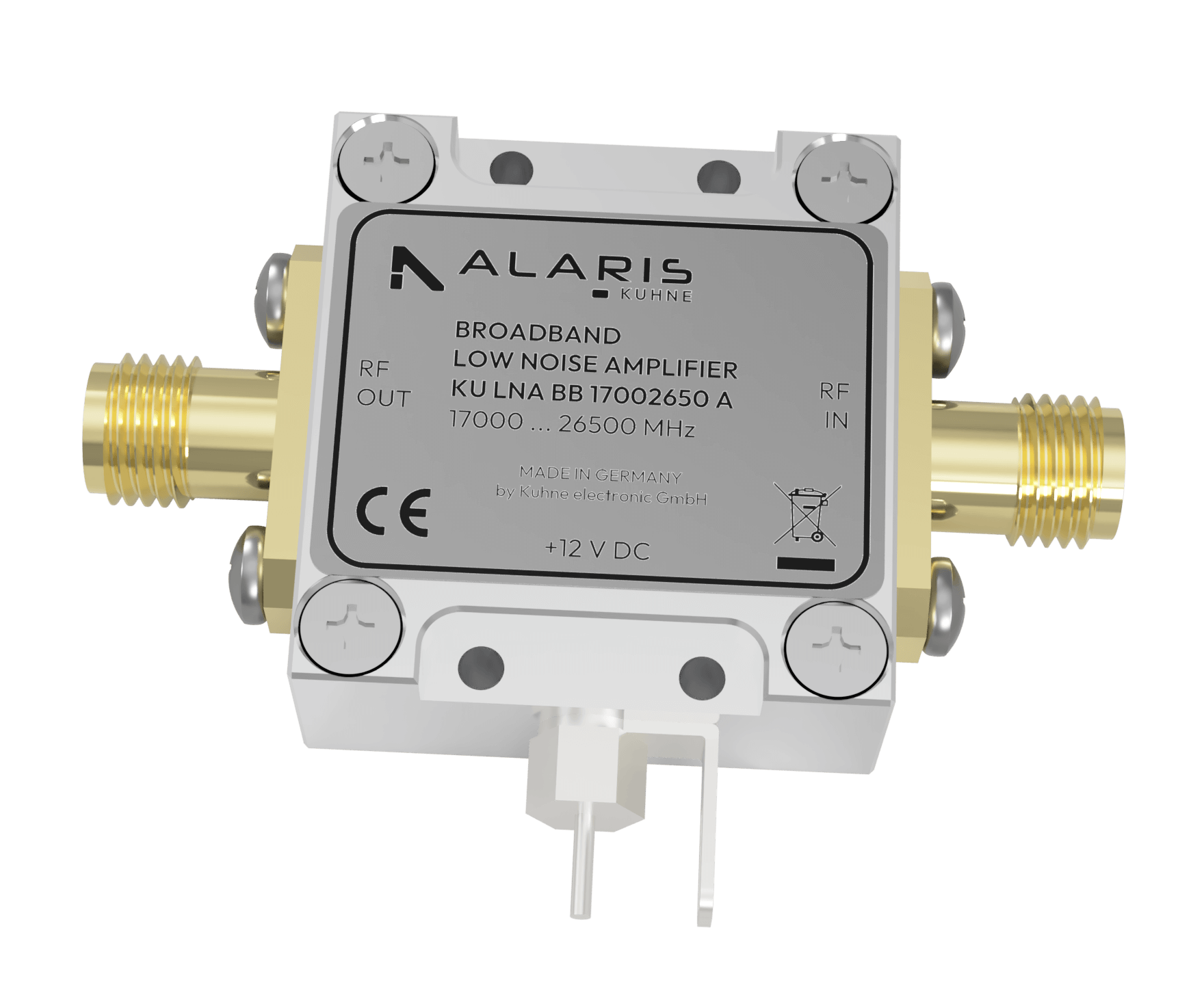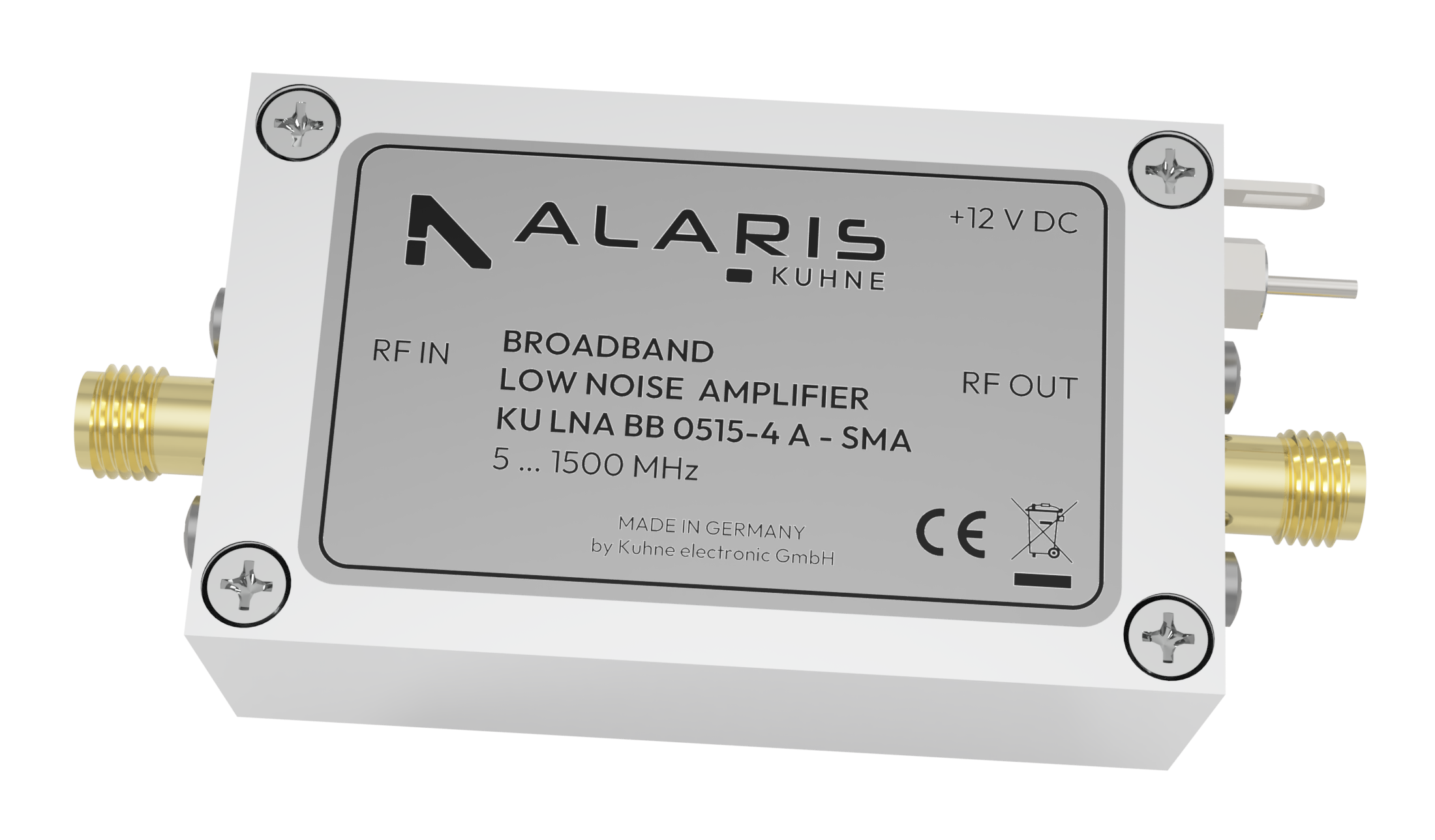

Broadband Low Noise Amplifier, 500 ... 7000 MHz
KU LNA BB 050700 B
The low noise broadband preamplifier KU LNA BB 050700 B impresses with a very low ripple of typ. +/- 1 dB over the wide frequency range from 500 MHz to 7 GHz. Gain and noise figure are typically 21 dB and 1.6 dB; respectively. Furthermore; the LNA shows a high IP3 and an output power of more than 100 mW. These outstanding technical properties result in a wide range of possible applications.
Additional information
Product Data sheet
Download data sheetAdditional product downloads
No additional product downloads available.
Specifications
| Frequency range | 500..7000 MHz |
| Noise figure @ 18 degrees C | typ. 1.6 dB, max. 2 dB @ 7 GHz |
| Gain | typ. 21 dB, min. 18 dB @ 7 GHz |
| Gain flatness | max. +/- 2 dB |
| Maximum input power | 16 dBm |
| Output power (P1dB) | typ. 20 dBm |
| Output IP3 | typ. 30 dBm, min. 27 dBm |
| Input return loss (S11) | min. 10 dB |
| Supply voltage | +9 ... 14 V DC |
| Current consumption | typ. 80 mA |
| Operating case temp. range | -40 ... +65 degrees C |
| Input connector impedance | SMA-female, 50 ohms |
| Case | milled aluminium |
| Dimensions (mm) | 23 x 24.5 x 9 |
| Weight | 15 g (typ.) |
- Moisture content measurement
- Quantum computing
- Agricultural processes
- Telemetry
- Traffic monitoring
- Remote control
- Sensors
- Emergency response systems
- GNSS
- Position, Navigation and Timing
- Maritime navigation
- Avionics
- EMC testing
- RF equipment testing
- RF System Comissioning Support
- Spectrum surveillance
- RF Test Suites
- Airborne communication
- Navigation
- Threat detection
- Weather detection
- Spectrum Monitoring
- Source geolocation
- Radio Direction Finding
- Radio Monitoring
- COMINT
- Radio Direction Finding
- C-ESM
- SATCOM
- Secure Communications
- V/UHF Tactical Communications
- Point-to-point Communications
- Repeaters, extenders and boosters
- Point-to-multipoint Communications
- Low probability of interception
- Digital
- Wireless backhaul
Product Applications
Industrial Processes
Infrastructure Management
Navigation
Test and Measurement
Avionics
Spectrum Management
Signals Intelligence
Radar and Remote Sensing
Communications
Broadcast
Academia and Research
- Remote power supply via RF output





